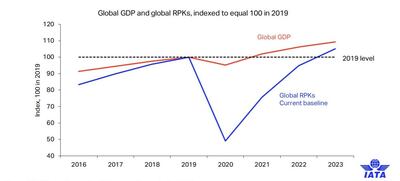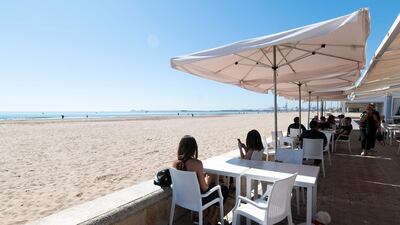Countries across the globe are jockeying for pole position to be the first to restart tourism as a rapid fix to their coronavirus-hit economies.
The major European destinations in France, Italy and Spain are ramping up preparatory efforts to attract holidaymakers for this summer to save an industry that provide vital incomes for millions of citizens.
With aircraft flights dropping to levels not seen since 1978, governments and tourist bosses are eager to ramp up travel in time for Europe’s summer holidays. Globally hundreds of hotels, resorts and small tourist businesses face going bankrupt if they fail to get any income from the peak season.
Countries are now considering ‘travel bubbles’ in which an agreement is put in place between nations for a mutual swap of travellers without restrictive quarantine.
Greece, where tourism provides 18 per cent of GDP, has already appealed to its main customers Germany and Britain to make a reciprocal travel agreement.
Haris Theoharis, the tourism minister, said if Britain dropped its proposed 14 day quarantine Greece would welcome UK holidaymakers. “If we don’t impose quarantine for people coming to Greece from the UK from someday onward, we would welcome it if the UK extended the same thing."
Neighbours Turkey are also desperate for tourists to return with the government writing to 70 countries assuring them it was safe for tourists. A significant 12 per cent chunk of GDP is earned from tourism with record revenues of almost $35 billion last year.
An agreement for a mini-free movement zone between Britain, France and Ireland is in the works but under pressure as the UK is still demanding that all incoming visitors undergo a 14-day quarantine. But Grant Shapps, the transport minister, indicated this could be relaxed with targeting of people from 'high-risk' countries. Britain currently has the world’s second highest toll of 34,796.
The government’s changed stance comes after Ryanair’s outspoken boss Michael Leary said he would lay on 1,000 flights a day from July, 40 per cent of the budget airline’s operating total.
“The 14-day lockdown has no credibility and I think will be eliminated by the time we get to the end of June anyway,” he told the BBC.
With 72 million people making overseas trips last year, Britain has now hinted that it might put in place ‘air bridge’ agreements with countries that have low infection rates.
The idea of an ‘air bridge’ between ‘safe’ nations will be the start of a slow recovery of airlines that has seen a 95 per cent fall in flights. New figures show that industry will lag two years behind global GDP economic recovery with 2023 forecast as the time it achieves 2019 levels.

There was good news for European tourist destinations after Germany – the biggest ‘exporter of tourists – announced it was likely to lift its ban on foreign travel by mid-June, in time for the school summer holidays.
Italy’s foreign minister said his country was open for business but warned against “blacklisting” certain countries that have high infection rates. Italy will allow tourists from within the EU from 3 June.
Tomorrow (Weds) the EU’s tourism minister will discuss summer travel planning at a videoconference. “Our message is we will have a tourist season this summer,” EU economic affairs commissioner Paolo Gentiloni said, "even if it's with security measures and limitations."
The Baltic States of Lithuania Latvia and Estonia have already agreed their own unique ‘travel bubble’ that allows free movement. A similar travel and trade plan exists between Australia and New Zealand after they contained the outbreak.
With international borders now unlikely to return to their pre-virus days for a long time the idea of ‘travel bubble’ agreements between countries is growing.
Some analysts have predicted two large trade and travel zones could emerge based on low infection rates. One that covers East Asia, taking in China, Japan and the Korean peninsula and the other in central and eastern Europe going from Scandinavia through Germany and down the Balkans to Greece. Both areas combined account for 35 per cent of global GDP.
Last year the trajectory for Caribbean tourism was on course again to break records with almost 9 million tourists arriving in the first three months of 2020, a 4.4 per cent increase. But now it’s long sandy beaches lie empty despite low infection rates.
Thailand’s tourism industry is preparing for a 75 per cent drop after last year’s record high of 40 million last year.
It has set out three phases for reintroducing tourists, from allowing local travel, to then welcoming select and ‘safe’ countries such as China and South Korea and finally, later this year Americans and Europeans.
Countries are now widely expected to introduce Covid 19 testing at international airports to ensure passengers are disease free.














